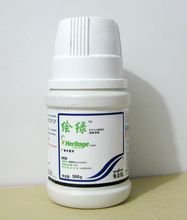
YINGKOU SANZHENG ORGANIC CHEMICAL CO., LTD. LIAONING CHINA
Address: No. 51, Xinxinli, Daqing Road, Zhanqian District, Yingkou City, Liaoning, China電話:0417-3638868
Fax: 0417-3638868
Email: ykszgs@sohu.com
Zip code: 115001
URL::091071.cn
The use of herbicides for weeding in orchards not only has a greater impact on the yield and quality of fruit trees, but also induces various diseases such as peach, plum, and pear gum disease, and accelerates senescence and death. After using herbicides, the young forests just planted slowed down, even died, and could not survive. Why does the orchard have such bad effects after weeding? Cyanuric chloride
The reason is:
Regardless of herbicides, they have great lethality on the roots of fruit trees, especially shallow-rooted crops such as peaches and pears. The roots are easily killed, which seriously affects the absorption of fertilizer and water. Therefore, the growth is affected and the yield and quality are greatly affected. In particular, the impact on young peach, pear, plum, and pomegranate forests is more serious, ranging from growth retardation to death.
As the temperature rises, weeds in the orchard grow quickly, and fruit farmers will spray or weeds in the orchard. For this reason, it is recommended that fruit growers do not use pesticides for weeding, but use methods such as mulching or growing grass in the orchard. The steward below will give you a detailed introduction to the orchard mulching and grass growing techniques.
Orchard biological covering technology
1. The role of biological coverage
1. Reduce soil surface runoff, prevent soil erosion and reduce water evaporation. Generally, the covered area can increase the soil water content by 41.98% and reduce the surface evaporation by more than 60%.
2. Adjust the soil temperature and reduce the variation of surface temperature. When the surface soil of the uncovered orchard rose to 49℃ in summer, the soil temperature in the covered area was only 32.5℃. During the dormant period, the soil temperature was 0.66~1.78℃ higher than the control.
3. Significantly improve soil fertility. After mulching, soil organic matter can increase by 5.85~128.17%, nitrogen can increase by 6.2~49.2%, phosphorus can increase by 2.4~180%, and potassium can increase by 29.8~31.8%.
4. Increase the number of soil microorganisms. After straw mulching, the ammonifying bacteria in the soil can increase by 48.59%; nitrogen-fixing bacteria increase by 1.05 times; fiber decomposing bacteria increase by 53.48%; fungi increase by 40.04%.
5. Improve fruit yield and quality. Covering with straw for one year can increase the output of apples by 17.65 to 85.71%. Covering two years can increase production by 38.29-228.57%. Covering three years can increase production by 47.06~328.57%. In the past three years, the cumulative increase in production was 100 to 642.85%. The dry hilly orchard has been covered continuously for 6 years, and the highest yield can be increased by 13.65 times. The first-grade fruit can increase by 16%, the soluble solid content of the fruit can increase by 1.6 times, the weight of a single fruit can increase by 18.3 grams, and the quality is significantly improved.
In addition, after the mulching, due to the strengthening of the tree, the size of the year is reduced, and the incidence of rot disease can also be reduced by 14.9-32.1%

2. Covering method
1. Covering materials: corn stalk, wheat straw, sorghum stalk, bean straw, weeds, leaves and other organic materials.
2. Covering time: It can be carried out all year round, but summer and autumn are suitable. When mulching in autumn, basal fertilizer should be applied first, and the field should be leveled, and those that can be watered should be watered, and those that cannot be watered should be covered after rainfall.
3. Covering method, thickness and dosage: spread the cover evenly under the canopy at a distance of 0.3 to 0.5 meters from the trunk, with a thickness of about 20 cm. Insufficient mulch or young orchard, just cover the tree rows or rows or tree trays. The whole park is covered. In the first year, it needs to cover about 3,000 kilograms per mu, and then about 800 kilograms per year. If only tree trays and tree rows are covered, approximately 800 kg of mulch is required per mu.
3. Management after coverage
1. Spot the soil on the covering to prevent wind or fire.
2, 0.5 kg nitrogen fertilizer is applied to each plant in spring. When fertilizing, open the mulching grass, apply more points or make shallow furrows. It is best to water some water after application, and then cover well. Add an appropriate amount of grass every year (keep it about 20 cm thick), turn it deeply once every 4-5 years, and turn the rotting grass into the soil during turning.
3. In areas where saplings are severely stripped, the tree tray can be covered with grass between the rows in early and mid-February to increase the temperature of the tree tray and the surrounding soil in time. After the soil is thawed in mid-to-late April, the tree can be restored. Disk coverage.
4. The prevention and control of plant diseases and insect pests is the same as that of uncovered trees.
5. For orchards with heavy soil, straw mulching will increase soil moisture, which will seriously affect soil permeability and available iron content, resulting in poor root growth of fruit trees, weak tree vigor, yellowing of iron deficiency, and massive occurrence of rot diseases. Straw covering, suitable for sand covering.